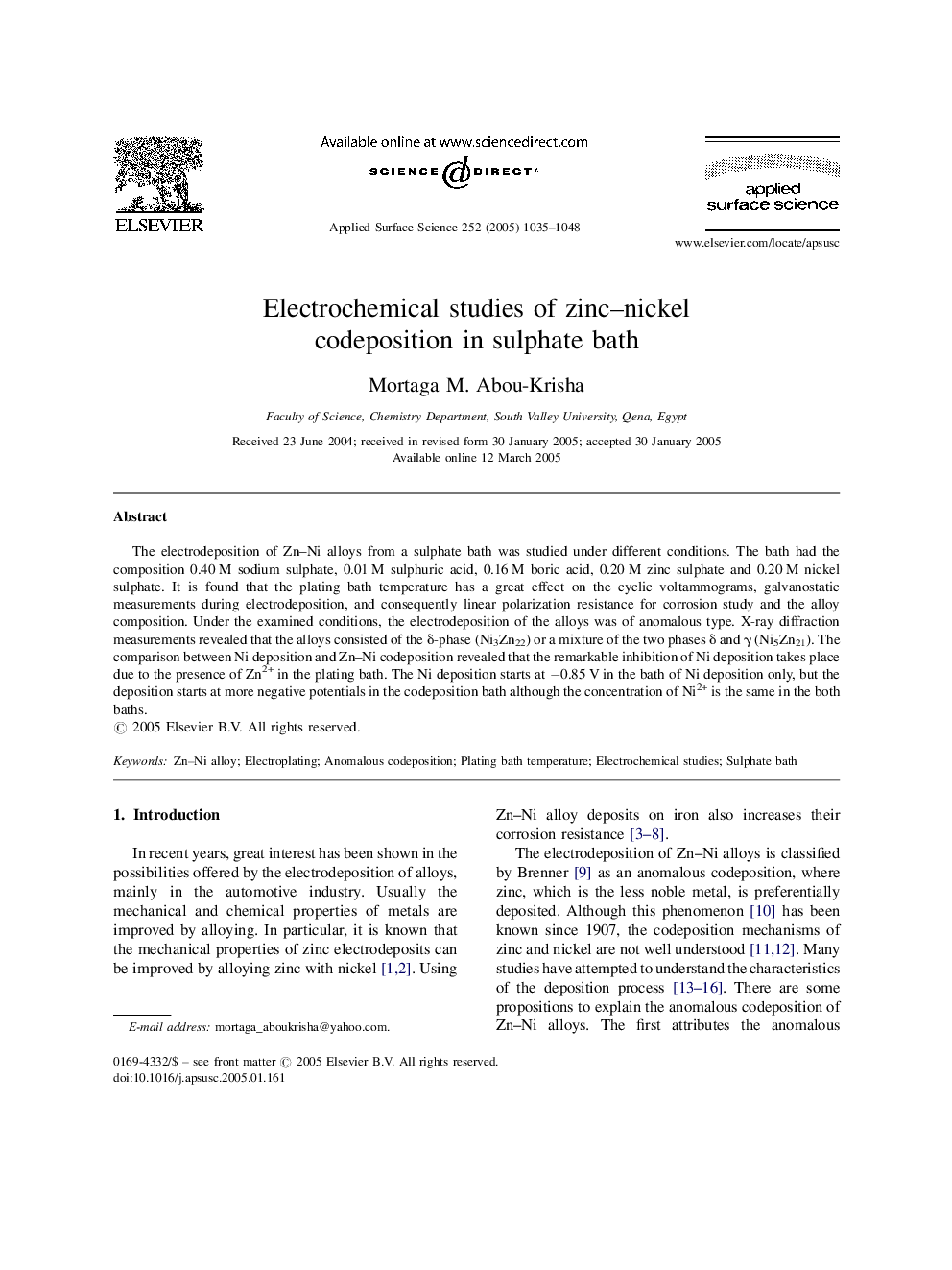| Article ID | Journal | Published Year | Pages | File Type |
|---|---|---|---|---|
| 9566706 | Applied Surface Science | 2005 | 14 Pages |
Abstract
The electrodeposition of Zn-Ni alloys from a sulphate bath was studied under different conditions. The bath had the composition 0.40 M sodium sulphate, 0.01 M sulphuric acid, 0.16 M boric acid, 0.20 M zinc sulphate and 0.20 M nickel sulphate. It is found that the plating bath temperature has a great effect on the cyclic voltammograms, galvanostatic measurements during electrodeposition, and consequently linear polarization resistance for corrosion study and the alloy composition. Under the examined conditions, the electrodeposition of the alloys was of anomalous type. X-ray diffraction measurements revealed that the alloys consisted of the δ-phase (Ni3Zn22) or a mixture of the two phases δ and γ (Ni5Zn21). The comparison between Ni deposition and Zn-Ni codeposition revealed that the remarkable inhibition of Ni deposition takes place due to the presence of Zn2+ in the plating bath. The Ni deposition starts at â0.85 V in the bath of Ni deposition only, but the deposition starts at more negative potentials in the codeposition bath although the concentration of Ni2+ is the same in the both baths.
Related Topics
Physical Sciences and Engineering
Chemistry
Physical and Theoretical Chemistry
Authors
Mortaga M. Abou-Krisha,
